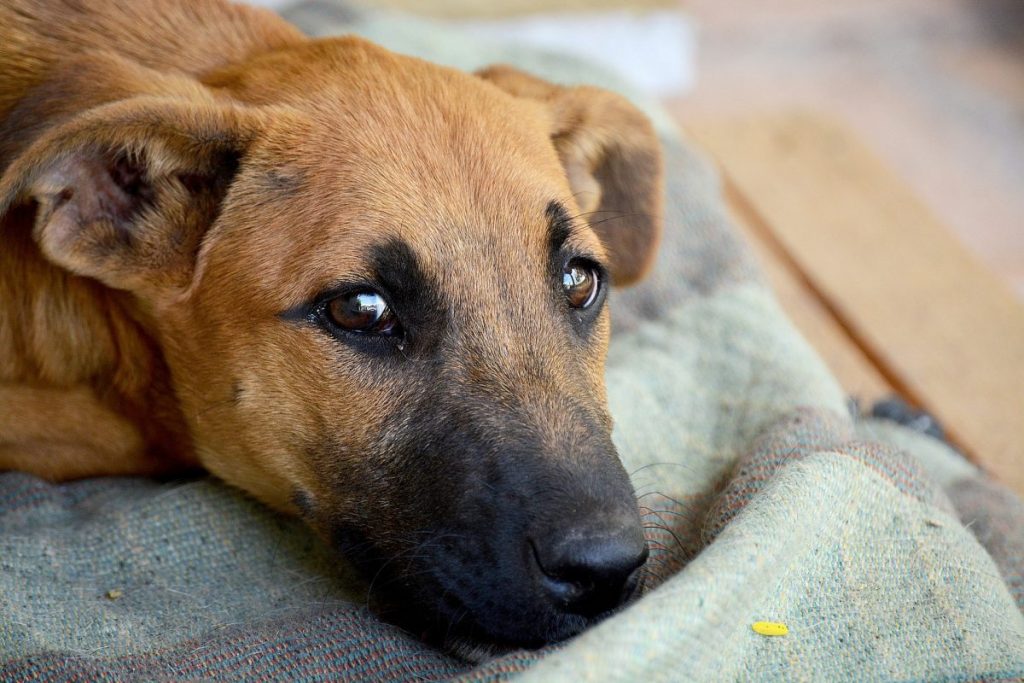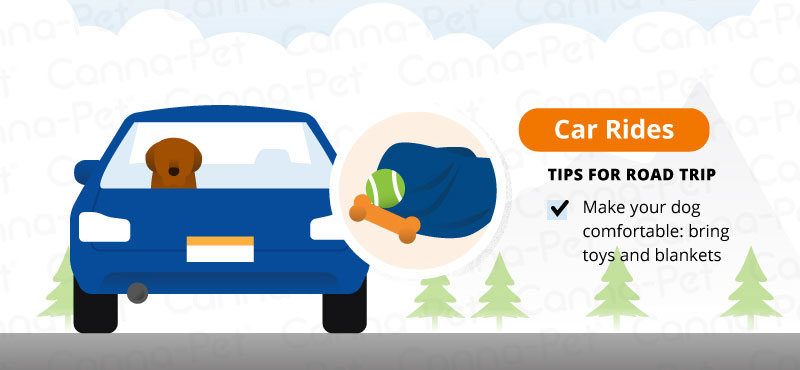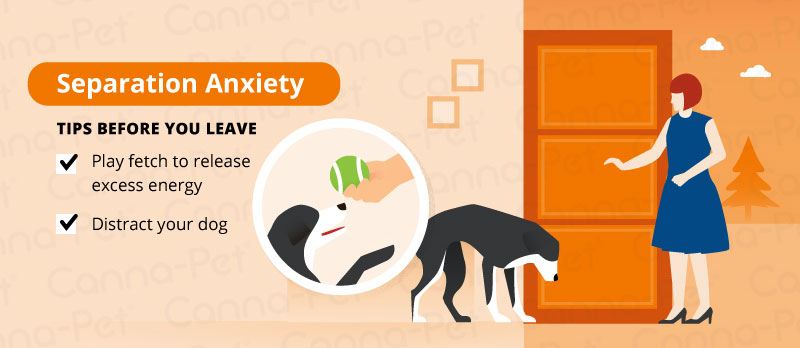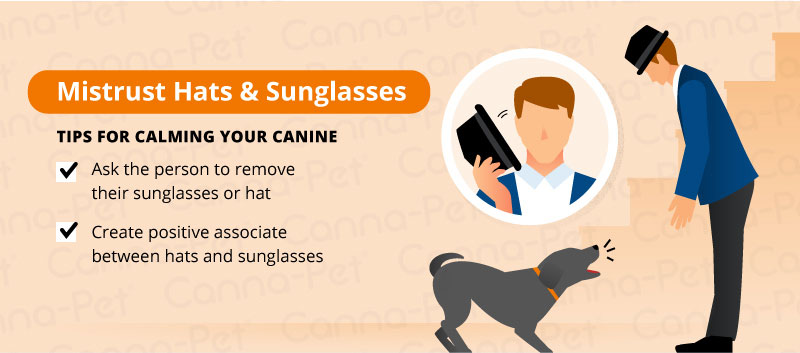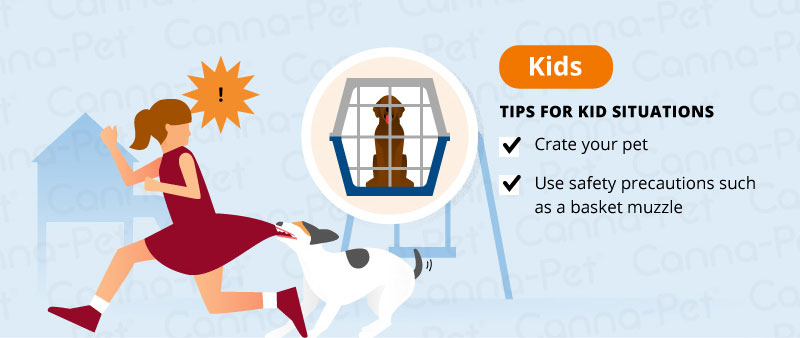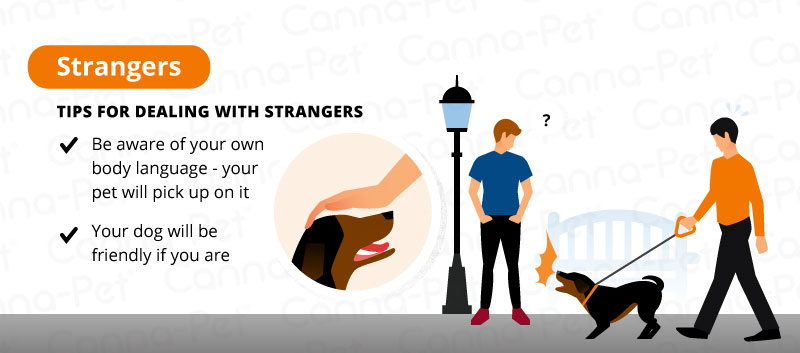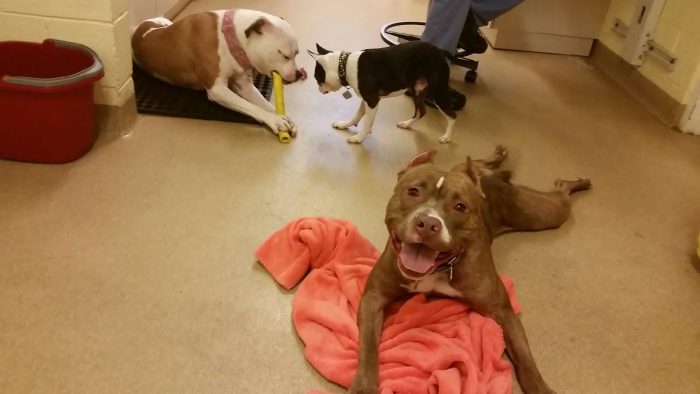What Determines Your Dog’s Phobias: Nature Vs. Nurture
There are a variety of reasons why your dog has developed his or her phobias in the first place. One of the most frequent causes of dog phobias and fear stems back to their puppyhood – if dogs aren’t exposed to a wide range of stimuli when they’re young (including a variety of people, places and things), they can suffer from a lack of socialization, and in turn, develop certain forms of anxiety or fear.
Therefore, if you’re fortunate to raise a dog from his earliest years, it’s highly beneficial to socialize him as much as possible so he can adapt and become familiar with his surroundings and the world around him.
However, there are also predetermined sets of behaviors for certain breeds – in other words, nature versus nurture. Genetics do indeed factor into your dog’s set of behaviors and social responses to certain situations, people and other stimuli.
For example, herding dogs – such as border collies, German shepherds, and shelties are ‘hard-wired’ a bit differently, since they’ve been trained and bred for thousands of years to become protective of their surroundings, other animals and their owners. As a result, they’re hypersensitive to their environments, and are more prone to anxiety and phobias.
Ultimately, every dog is unique and their breed won’t necessarily determine their anxieties – it really comes down to a combination of your dog’s upbringing, predispositions, and how well you can help your pet cope with any phobias he or she may have.
How Can I Help My Dog Cope with His Anxiety?
According to experts at the ASPCA, some dogs are actually born with certain types of anxiety or phobias, while others suffer anxiety disorders similar to humans, a condition known as PTSD (post-traumatic stress disorder), or fears based on past traumatic experiences.
While it may take some time, patience and even professional assistance, you can help your fur babies overcome their phobias and anxiety. Here are a list of common dog fears and phobias, along with helpful tips to work through them with your four-legged friend:
You’re Driving Me Crazy! Dogs Afraid of Car Rides
For many dog owners, it’s all too common for our beloved pooches to have a deep-seated fear of riding in the family car. Unfortunately, road trips are usually associated with unpleasant destinations, such as a trip to the vet or the groomer. Worse yet, for rescue dogs, a ride in our SUV may stir up fears of possible abandonment.
As pup parents, it’s our job to make our dogs a bit more comfortable, both figuratively as well as literally. The key to success is to redefine car outings: help your dog associate it with a positive experience rather than a negative one. Your dog may actually benefit from crating during car trips; in addition to keeping him safe, it also creates a feeling of calm for many pets.
Bring a snuggly blanket or a favorite chew toy along for the ride to further ease his anxiety, as well as treats (unless he is experience car sickness). Always carry a portable water dish and bottle – keeping your pooch hydrated is of utmost importance on any trip, especially during the warmer months.
Tip: Retrain your dog’s association with car rides by bringing him to a ‘fun’ destination, such as his favorite dog park, beach, or anywhere he enjoys playing outside. Before you know it, he’ll be looking forward to (not loathing) road trips!
Please Don’t Leave Me! Dogs Who Fear Being Left Alone
Another common cause of distress in our pooches is separation anxiety, which can result in a range of behaviors, from pacing and crying to an all-out destruction of our home and its interiors. When left alone for more than several hours, some dogs grow increasingly anxious awaiting our return, and are not emotionally equipped to handle our departure.
So what’s a dog owner to do? Depending on the severity of your pup’s anxiety woes, there are a number of different approaches:
- Go Fetch: Before you leave your dog, tire him out with a bit of exercise – a brisk walk, a game of fetch in the yard or another favorite game can help ease the transition (and possibly help him relax – he might take a nap after your ‘work-out’).
- Hide & Treat: Hide your pooch’s favorite tasty treats around the house so he can ‘hunt’ for snacks while you’re gone. Not only will this tactic keep him distracted for several hours (depending on how well you hide them), but it will create a game-like mentality for your dog, retraining his association of being left alone from something negative to something positive.
- Music Soothes The Savage Beast: Some dogs actually respond to noise therapy – either music or voices can help ease their anxiety. Leave your TV or radio on for your distressed doggie while you’re out and about.
Tip: In the case of severe separation anxiety, you may need to consult with the experts. First, meet with your veterinarian to rule out any underlying medical conditions. Once you’ve determined it’s a behavioral issue, you may wish to seek a certified dog trainer to assist you with the next steps.
Keep It Down! Dogs Who Hate Loud Noises
One of the most common phobias seen in our canine companions is the fear of loud noises. Many pet owners are unsure how to calm their pooches during a thunderstorm, the Fourth of July firework celebration down the block or even a quick encounter with a vacuum.
Whether your pup had a bad experience when he was young or is simply terrified of loud noises, one of the best things you can do is to NOT coddle him or her – studies show that overreacting can actually reinforce this frightened behavior. Instead, try desensitization techniques. Is Fido afraid of thunder? Try playing a pre-recorded storm at a low volume while playing games with him and feeding him treats, gradually turning up the volume over the course of a few days until he’s used to it.
Distract your dog as much as possible in the event of the loud noise so as to keep his mind off of it – the key is to redirect his thinking in a positive manner. Be reassuring and let him know you’re there for him, but try not to feed into his fear – when you create a stable and nurturing environment, it will help him overcome his anxiety.
Tip: Try and remain as detached and low-key as possible during the noise-causing incident: by remaining calm and not showing a reaction to the loud noises, you can help to desensitize your dog to the stress-inducing situation. Some dogs prefer to be in a dark, quiet place if it’s available, such as a basement or closet; other dogs will take to crating during stressful moments when the volume or stimuli are too much.
What Are They Wearing? Dogs Who Mistrust Hats & Sunglasses
One particular phobia your dog may deal with is the topic of ‘disguise’ – yes, those elusive folks in hats, sunglasses or other garb concealing their identity or altering their silhouette may send your four-legged friend over the edge. For some canines, if they can’t see someone’s face clearly, they may not trust that person, and reactions can vary from barking to nipping or even lunging.
While this can be bothersome while walking your dog in a public place, what can be even more problematic is if said person wants to interact with your pet. It’s therefore up to you to explain to the person that they need to remove their sunglasses, hat, backpack, hoodie etc. in order for your dog to relax. In most cases, once they’ve done so, most dogs will calm down enough to interact with that person.
You can help out your pooch with a variety of desensitization methods, including wearing a hat around him – or better yet, encouraging friends to wear a hat around him and feed him treats, so he has a positive association with hats (or whatever removable object that sets him off). In extreme cases, you may want to consult a licensed dog trainer if this behavior becomes an ongoing issue.
Did You Know? This particular phobia is usually linked to the ‘imprint’ phase of puppies, between ages 4 weeks – 4 months. If they’re not properly socialized and exposed to as many situations/people as possible during this crucial time frame, dogs may be easily frightened by certain triggers as they mature.
No Children Allowed! Dogs Who Don’t Like Kids
In the instance that your furry friend is not a fan of little boys and girls, it could be due to a few different reasons – they may have had a negative experience in the past with a child, either in a prior living situation or elsewhere. In other cases, there are some dogs who simply don’t like (or trust) kids.
Although there are specific training techniques that can be used to make a dog more tolerant of children, it’s best to accept that some dogs are better off in an adults-only home situation. In this instance, it’s best to consult with your vet, a professional dog trainer or another expert handler who can assess the situation and provide you with solutions and advice.
Tip: For times where your dog must be around children, you may want to crate your pet; in other situations, a basket muzzle may also be a safety precaution worth considering. Obedience and trust are paramount in the relationship between dog and owner; for more helpful information regarding this phobia, click here.
Stranger, Danger! Dogs Who Fear Strangers
In some circumstances, there are dogs who are afraid of strangers – men, women, children; it doesn’t matter – if the dog doesn’t know the person, they may bark, lunge, cower in the corner or display some form of anxiety, fear or even aggression.
It may be due to a lack of socialization as a puppy – in other words, your dog may not have been exposed to a wide variety of people and situations during its formative years. However, your dog’s behavior may also be the result of certain negative past experiences, such as abuse or neglect (for example, if he was a rescue).
Whatever the case, dogs who have trust issues with strangers need special TLC and a great deal of behavioral modification and obedience training, which will sometimes require the assistance of a professional dog trainer.
It’s important to provide your dog with a safe space in the event when company is expected; when visitors are around, a crate or area where he will be left alone is the safest and best solution for you, your dog and your guests.
Tip: It’s important to be mindful of your body language when you’re anticipating guests or meeting people for the first time: a dog with a predisposition towards strangers will be hyper-aware of your actions. If you act fearfully towards a stranger, it can signal danger or fear to your dog. Try to remain friendly, calm and upbeat when you and your dog meet new folks.
Coping Mechanisms for Dog Phobias: Other Tips to Help an Anxious Pooch
According to Animal Planet’s popular dog trainer and internationally-known author Victoria Stilwell, training your dogs using food can be highly beneficial, as their sense of smell plays an integral part of their day-to-day activities, including interactions with people and their surroundings.
For example, if you’re trying to redirect certain behavior – say your dog’s phobia of being left alone – towards something more positive, using a favorite treat may be your ticket to success. Since a dog’s sense of smell is so much greater than ours, Stilwell explains you can ‘deactivate’ the emotions of fear and anxiety and actually replace it with the positive reactions that food elicits! In her training experience, she believes a dog’s sense of smell can actually allow owners to help pups overcome their fears.
Stilwell also notes that there are no ‘quick fixes’ for your fearful dog’s behavior – just as there are people who require therapy, it takes months (and sometimes years) before you will see results. The same rules apply to your pooch – it takes time, patience, behavior modification and of course, a lot of love – before you will notice an improvement.
Hazelnut’s Canna-Pet Story
Hazelnut is an adorable two-year-old Pitbull who spent most of her development in near-total isolation. As a result, she has had a lot of difficulty communicating well with people. Her owner noticed that these communication problems have caused a lot of stress in Hazelnut, which manifests itself in nervous barking, chewing, and hyperactivity.
Prozac helped her focus in training but she is still sensitive enough that changes in the environment still set her off. Her owner tried various behavioral supplements, additives, balms, and even scents. Yet, still managed to see zero changes.
At this point, Hazelnut and her owner were feeling discouraged and were not comfortable increasing her medication. However, once Hazelnut tried Canna-Pet’s Advanced MaxCBD, her owner saw a dramatic change. Hazelnut started napping and enjoying her downtime rather than nervously barking or chewing up her bed.

